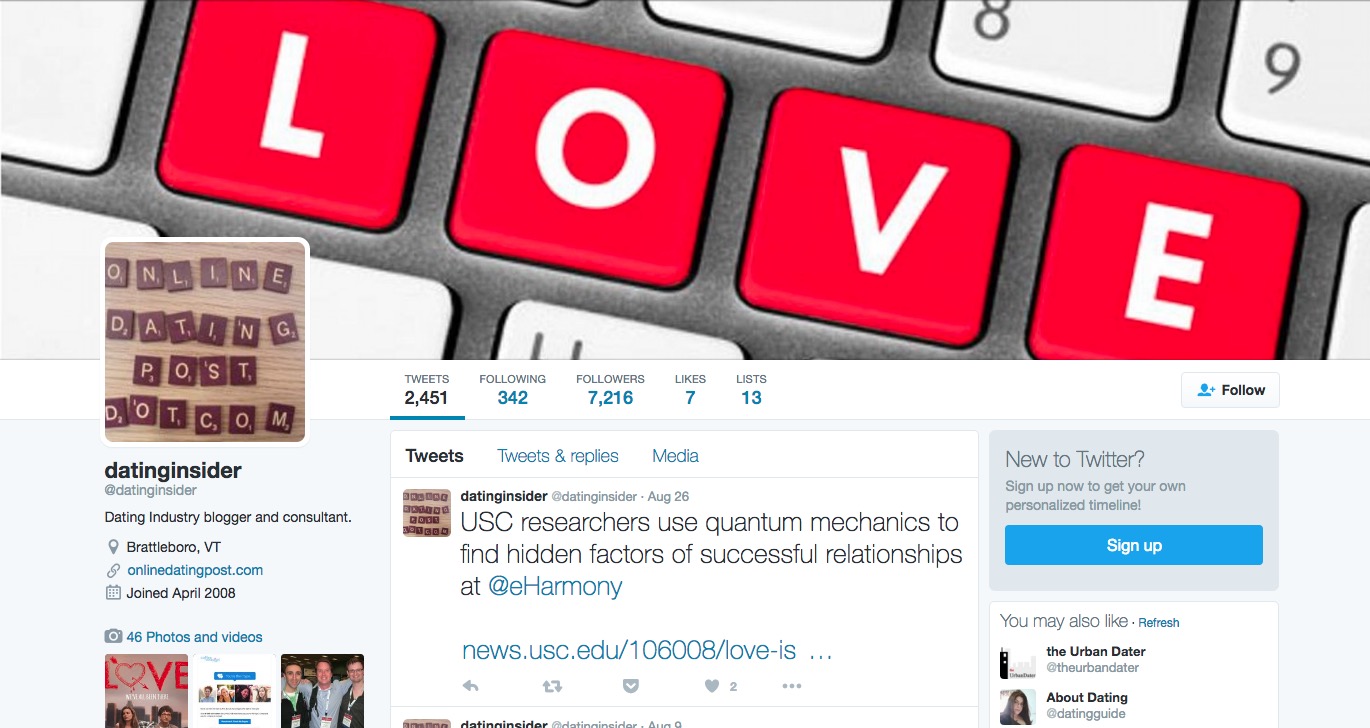Niche dating sites can be incredibly effective if you’re Jewish, Black, Gay, Athletic or belong to any number of groups where it makes sense to self-identify as part of a particular group of people. Matchmaker was the first site to have many different demographic areas broken out inside a single dating site, but Date.com merged everything into one database when they acquired the site.
These days I’m increasingly interested in how large dating sites are taking advantage of the staggering amount of information the collect about their users. Large dating sites are spending tens of millions of dollars logging, storing, analyzing and refining compatibility algorithms on multi-terabyte data sets based on what users is doing on their sites. Data such as the number of emails being sent and responded to daily and hundreds of other metrics and measurements are being captured, at least I hope they are.
Smaller sub-500,000 member niche dating sites are simply not able to compete when it comes to designing compatibility algorithms and dynamic content display. They have to think smarter about which data to collect and how to feed back what they learn about how people use their site in an ongoing incremental update process. Dating sites are not set-it-and-forget-it enterprises, although this is how much of the industry views itself.
Building a quick site turning on the marketing dollars and watching the money pour in works for a few sites, but is not the golden rule by any means when it comes to competing in today’s crowded marketplace.
The widening gap between niche sites and mainstream dating sites reminds me of when Google was starting to get traction. There was Alta Vista, HotBot, Dogpile and 25 other search engines. In the past 5-7 years the majority of them having fallen by the wayside as Google has risen to prominence. This has not been the case in the online dating industry, yet.
Downloading a dating platform and rolling the dice with a few thousand dollars is almost certainly a recipe for disaster in today’s market. This is not to denigrate dating platform providers. On the contrary, I think there is a lot of room for groundbreaking sites to rise up and take market share from slack dating site operators. but what I’m hearing from people day in and day out is a lack of innovative though in regards to what singles are looking for in a dating site these days and the platform providers are simply providing just that, a platform. That’s where I come in as a consultant.
Dating sites are simply starting up all over the place these days as they try and cash in on the recession-based surge the media has done such a good job mis-reporting.
Lately I’ve noticed that most dating software vendors are reticent about discussing their businesses and that more and more people are building sites themselves, either through software platforms or White Label Dating. I still get 10-20 emails a week from startups, but now they are looking for free feedback on their concept, not the multi-month engagements of the past where I work with them to refine their business models and deal with the 87 issues any dating site startup needs to address in order to be successful.
If the industry is at the point where anyone can launch a dating site or become a pseudo-affiliate of White Label Dating, where is the interesting stuff happening? These days the action and interesting stuff tends to be happening at the top ten dating sites. Thats where the real innovation and growth is occurring, along with one heck of a steep learning curve. And that’s where my focus is moving towards as well.
Lately I’ve been reading more stories like these:
Is Big Data at a tipping point?
Online dating: Your profile’s long, scary shelf life
How Google and Facebook are using R:
Itamar Rosenn at Facebook conveyed how Facebook’s Data Team used R in 2007 to answer two questions about new users: (i) which data points predict whether a user will stay? and (ii) if they stay, which data points predict how active they’ll be after three months?
For the first question, Itamar’s team used recursive partitioning (via the rpart package) to infer that just two data points are significantly predictive of whether a user remains on Facebook: (i) having more than one session as a new user, and (ii) entering basic profile information.
For the second question, they fit the data to a logistic model using a least angle regression approach (via the lars package), and found that activity at three months was predicted by variables related to three classes of behavior: (i) how often a user was reached out to by others, (ii) frequency of third party application use, and (iii) what Itamar termed “receptiveness†— related to how forthcoming a user was on the site.
Facebook’s “In-House Sociologist†Shares Stats on Users’ Social Behavior
These stories may seem to have little to do with online dating, but as a whole they can be seen as incredibly inspiring when viewed from the perspective of someone running an established dating site or looking to start one.
One one end of the spectrum we have bare-bones sites like SinglesNet at the top of the charts, both for traffic and consumer complaints. On the other end we have analysis-driven dating sites like Chemistry and eHarmony (both with their share of complaints as well) leading the charge into massively scalable dating sites able to match members heuristically.
In between we have the niche sites making a tidy profit for a handful of companies focused on satisfying customer demand and hopefully having a good time while they do it.
Then we have the startups, which range from naive to incredibly thoughtful when it comes to business models, marketing plans and expectations. See above.
Each sector of the online dating industry has is own set of issues and objectives but all share these common goals: Attracting members, converting them and then retaining them for as long as possible. This in effect is the essence of online dating and of the work I perform, day in and day out, for five years and counting. These goals will not change anytime soon, but the strategy, execution and resources required the achieve them are evolving drastically. That’s what I attempt to discuss here in the hopes that the online dating industry values my effort and insight enough to warrant hiring me.
As compatibility matching and the systems required to support millions of members continue to increase in complexity, the number of dating site able to compete is going to shrink. This will lead to consolidation, with a few Googles MSN Seach and Ask.com’s in play and then a tier of niche sites catering to 500,000-people communities based on age, sexuality and interest. The rest of the market will solider along, strong enough to live on shoestring budgets and clever marketing campaigns. I think this is exactly where the market needs to go, but the timeline in which this will happen is anyone’s guess.
Anyone who disagrees should go read up on Facebook’s growth, the small number of social networks and the consumer revolt against myriad profiles and demand for simplicity. Online dating is different from social networking in many ways, but the writing is on the wall. What do you think?

